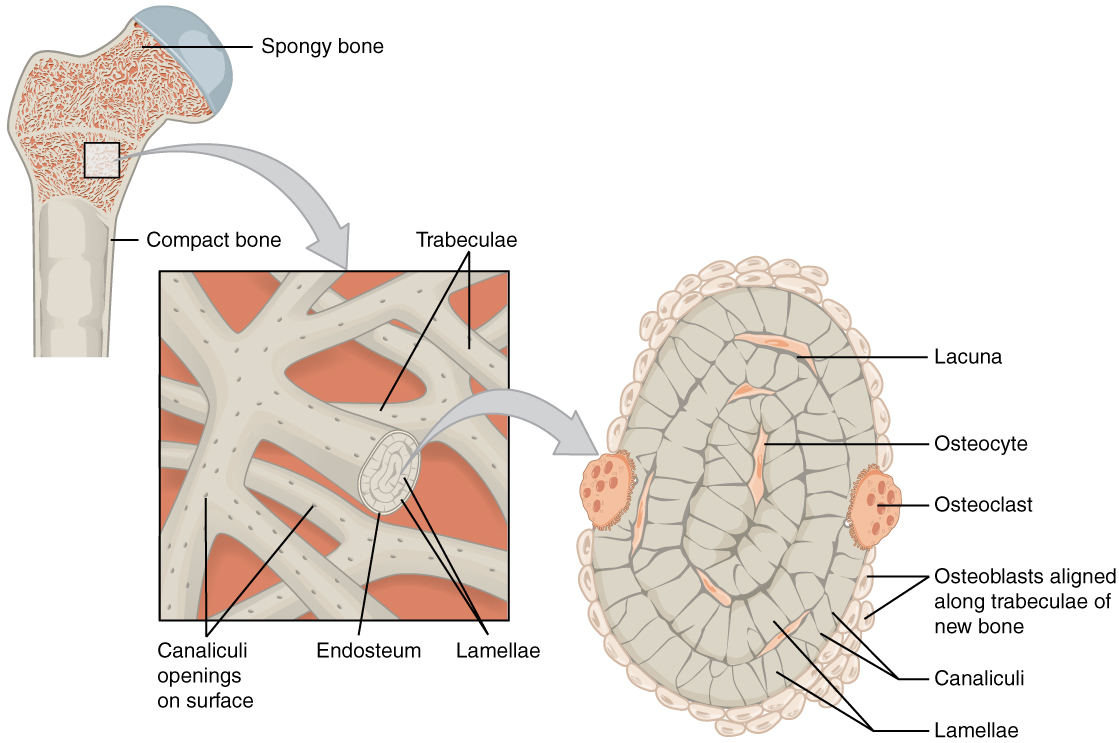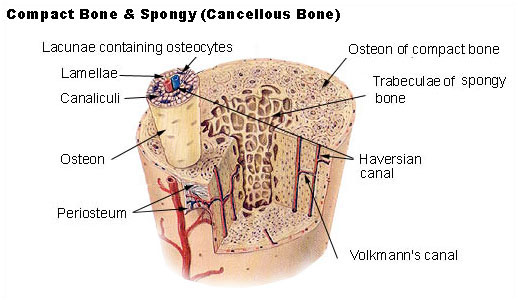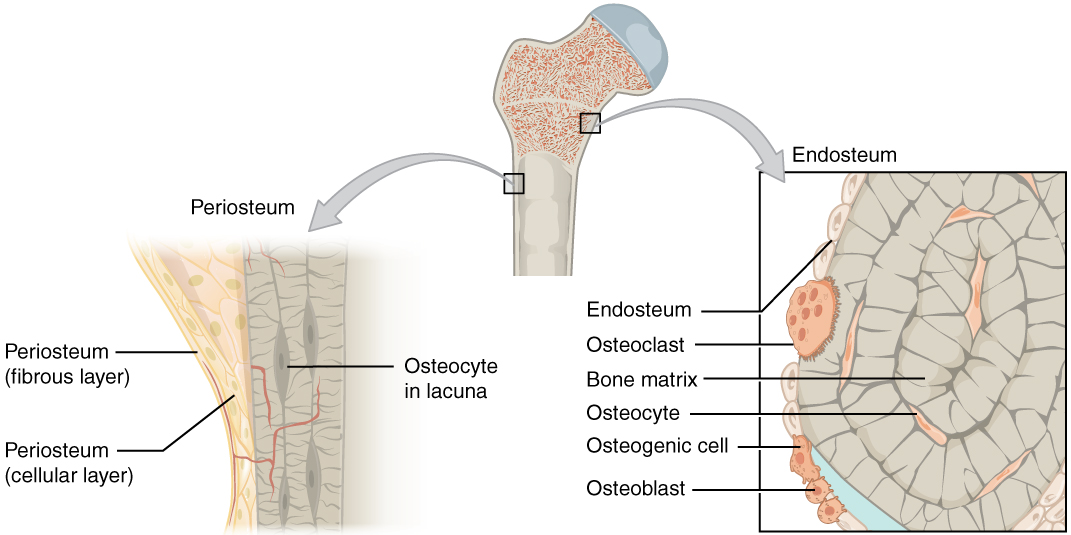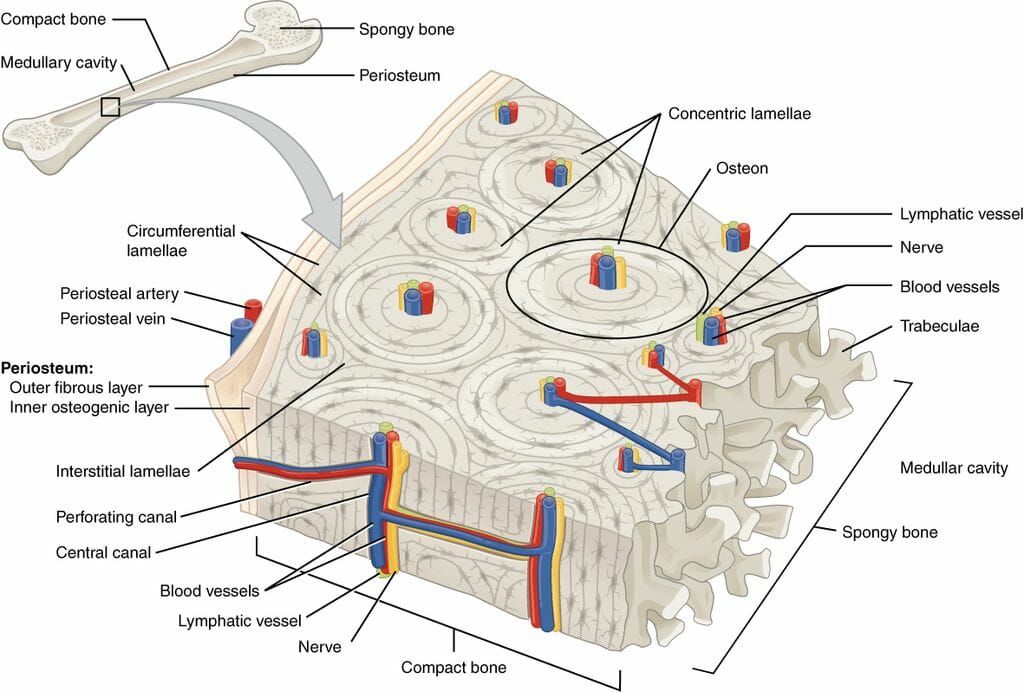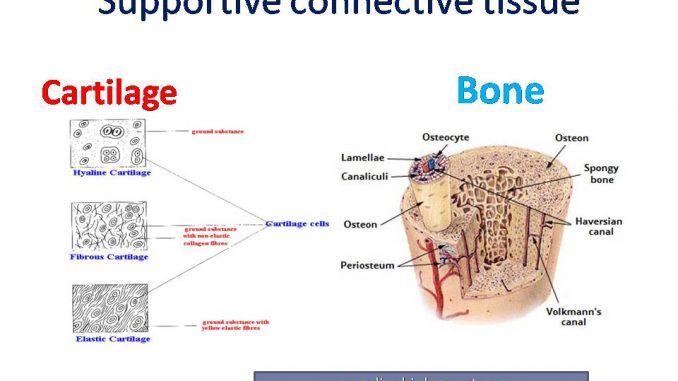Bone Tissue Diagram

The exchange of calcium between bone and body fluids especially the blood is regulated by several hormones.
Bone tissue diagram. Which of the following is the most important hormone regulating calcium exchange. Blood vessels and nerves. Central haversian canals run longitudinally. Histology general cartilage and bonebone tissue bone tissue register now and grab your free ultimate anatomy study guide.
Bone tissue stores 99 of the bodys calcium. They produce the red marrow found in spongy bone tissue. Functions of bone tissue are listed below. Osteoblasts osteocytes osteogenic cells and osteoclasts figure 5.
Later discussions in this chapter will show that bone is also dynamic in that its shape adjusts to accommodate stresses. Bone tissue osseous tissue differs greatly from other tissues in the body. Register now and grab your free ultimate anatomy study guide. Bone cells and tissue.
Bone tissue anatomy physiology revision about the structure and functions of human tissue types. Secrete osteocalcin which stimulate insulin secretion by the pancreas increases insulin sensitivity in adipocytes and limits growth of adipose tissue. Bearing concentric ring structure blood vessels and nerves penetrate periosteum through horizontal openings called perforating volkmanns canals. Is the bone cell responsible for forming new bone and is found in the growing portions of bone including the periosteum and endosteum.
Bone tissue also called osseous tissue is classified as either compact bone or spongy bone depending on how the bone matrix and cells are organized. Each bone is a complex living organ that is made up of many cells protein fibers and minerals. Bone is hard and many of its functions depend on that characteristic hardness. Bone tissue bone is the basic unit of the human skeletal system.
The skeletal system also provides attachment points for muscles to allow movements at the joints. This is a sample quiz. Called lamellar bone groups of elongated tubules called lamella majority of all long bones protection and strength wt. They add to the bones density and strength by increasing the diameter of the shaft.
The skeleton acts as a scaffold by providing support and protection for the soft tissues that make up the rest of the body.
